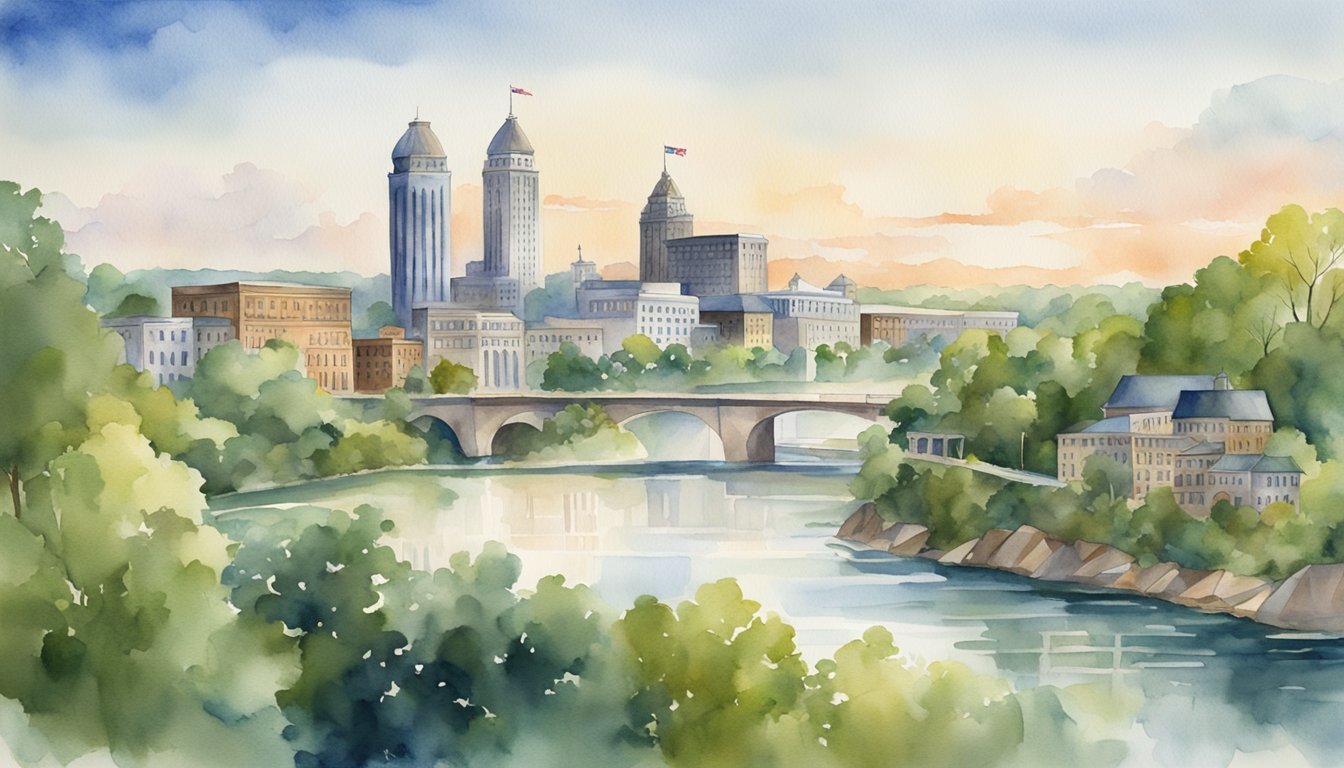State Overview
Geography
Alabama is a southeastern state in the United States, known for its rich history and diverse geography. The state has an overall area of around 52,420 square miles, making it the 30th largest state by area. Alabama is bordered by Tennessee to the north, Georgia to the east, Mississippi to the west, and Florida to the south. The state’s diverse landscape includes coastal plains, forests, and mountains. Alabama’s southwestern corner provides a small coastline along the Gulf of Mexico, while the northern part of the state features the Appalachian Mountains. Alabama’s climate is generally warm and humid, with hot summers and mild winters, making it an attractive destination for outdoor activities year-round. The state is home to numerous historical landmarks, including sites from the Civil Rights Movement and the Civil War. For those traveling north, exploring tennessee facts for visitors can provide insights into the neighboring state’s attractions and cultural significance.
History
Alabama joined the United States as the 22nd state on December 14, 1819. The state played a significant role throughout various historical periods, including the Civil War and the Civil Rights Movement. The state’s capital, Montgomery, served as the first capital of the Confederate States during the Civil War. Later in history, the state became a focal point for the Civil Rights Movement in the 1950s and 1960s, with important events such as the Montgomery Bus Boycott, Selma to Montgomery marches, and Birmingham demonstrations taking place.
Demographics
According to the 2020 Census, Alabama has a population of over 5 million residents. The state’s demographics include 67.5 percent identifying as White, 26.6 percent as African American, 4.4 percent as Hispanic, 2.4 percent as multiracial, 1.4 percent as Asian, and 0.5 percent as Native American. With major cities such as Montgomery, Huntsville, and Mobile, Alabama serves as a hub for various industries and cultural centers.
Alabama is also known as the “Heart of Dixie” and the “Yellowhammer State.” The Yellowhammer is the state’s official bird and is a variety of woodpecker that can be found throughout the state at all times of the year. Alabama’s state motto is “Audemus jura nostra defendere,” which translates to “We dare defend our rights” in Latin, reflecting the state’s rich historical background.
Cultural and Economic Significance

Industry and Economy
Alabama has a diverse economy with agriculture and industry playing significant roles. Historically, cotton was a predominant crop in the state, but the present-day economy has expanded into other industries, such as steel production. The average farm size in Alabama has grown from 83 acres in 1940 to 211 acres in 2017. The conversion of agricultural land to commercial timbering and hunting preserves has also been on the rise.
Besides agriculture, Alabama has a strong presence in industries like automobile manufacturing, aerospace, and mining. The state is home to the Marshall Space Flight Center in Huntsville, managed by NASA. This facility has made significant contributions to space exploration, solidifying Alabama’s role in the field of aerospace.
Civil Rights Legacy
Alabama has a rich civil rights history. During the 1950s and 1960s, many African Americans in the state were at the forefront of the struggle against racial segregation. The Civil Rights Movement saw several key events take place in Alabama, such as the Montgomery Bus Boycott, sparked by Rosa Parks refusing to give up her seat to a white passenger. The enactment of desegregation laws significantly changed the course of history nationwide.
Birmingham, Alabama’s largest city, played a crucial role in the Civil Rights Movement as well. The city witnessed several nonviolent protests, which led to the development of important civil rights legislations.
Historic Landmarks
Alabama is steeped in history, from its involvement in the Civil War as part of the Confederacy, to its significant role in the Civil Rights Movement. The state is dotted with several historic landmarks that tell the narrative of its past.
Some examples include the Rosa Parks Museum in Montgomery, dedicated to her life and the Civil Rights Movement, and the Birmingham Civil Rights Institute, which preserves the legacy of African American activists in the city.
Another noteworthy historic site is the Sloss Furnaces in Birmingham, a National Historic Landmark that represents the city’s industrial past. The furnaces produced iron for nearly 90 years and now serve as a museum of industry, highlighting the many contributions made by Alabama to the industrialization of the nation.

